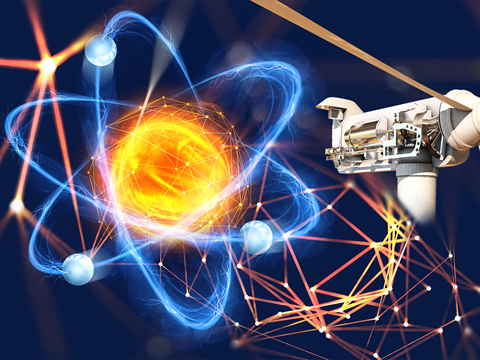Lighting
Critical minerals, policy, and the energy transition
Critical Minerals in Lighting and Phosphors
Modern lighting and display technologies represent a sophisticated convergence of materials science, where critical minerals, particularly rare earth elements, transform how we generate and utilise light across industrial, consumer, and technological domains. From energy-efficient LED lighting to advanced displays, a complex ecosystem of minerals including rare earth elements like lanthanum, cerium, terbium, europium, and transition metals such as indium and gallium enables unprecedented performance and energy efficiency. These critical minerals are strategic resources underpinning the global transition to sustainable, high-performance illumination solutions. By manipulating the unique luminescent properties of rare earth elements, engineers create phosphor technologies that enhance light quality, reduce energy consumption, and expand lighting potential across telecommunications, display, architectural, and industrial applications. As industries prioritise technological innovation, the strategic importance of these critical minerals in lighting technologies represents a crucial intersection of geological resources and advanced materials engineering.
Critical Minerals driving phosphor technologies
Semiconductor and base materials
Lighting and display technologies are fundamentally anchored in the sophisticated world of semiconductor and base materials. These critical minerals form the technological base that enables the transformation of electrical energy into light, driving innovations across LED, display, and illumination systems. Silicon, phosphorus, gallium, and germanium represent a complex mineral ecosystem that underpins modern optical and electronic technologies, bridging fundamental material science with cutting-edge engineering capabilities and enabling quantum-level interactions that allow for unprecedented control over light generation, transmission, and manipulation that define the performance, efficiency, and potential of contemporary lighting and display technologies.
-
Silicon forms the fundamental substrate for most phosphor and lighting technologies, providing the critical base structure for semiconductor applications. Its semiconductor properties enable the creation of LED chips and electronic components that form the foundation of modern lighting systems. Phosphorus plays an equally crucial role, acting as a key dopant and enabling the creation of semiconductor materials with specific electronic characteristics essential for light-emitting technologies.
-
Gallium and Germanium represent advanced semiconductor materials that significantly enhance phosphor and lighting performance. Gallium is particularly important in creating high-efficiency compound semiconductors like gallium nitride, which are fundamental to blue and white LED technologies. Germanium contributes to optical components and specialized phosphor coatings, offering unique material properties that improve light transmission and energy conversion efficiency.
Rare earth elements for luminescence
The rare earth elements form the most sophisticated group of minerals driving phosphor technologies. Lanthanum, Cerium, Praseodymium, Neodymium, Samarium, Europium, Gadolinium, Terbium, Dysprosium, and Holmium each contribute unique luminescent properties that enable precise colour generation and light manipulation. Europium, for instance, is critical in producing red and blue phosphors, while Terbium generates vibrant green luminescence. These elements work synergistically to create the complex colour palettes used in modern display and lighting technologies.
-
Europium is the premier colour-rendering rare earth element, responsible for generating pure red and blue luminescent colours. It is critically important in creating vibrant, high-quality display technologies, particularly in LED screens, television displays, and smartphone screens. Europium ions can efficiently convert electrical energy into specific wavelengths of light, enabling precise colour reproduction and enhancing the overall colour gamut of display technologies.
-
Terbium specialises in generating green luminescence, making it fundamental to creating full-colour display and lighting systems. Its unique electronic configuration allows it to emit a distinctive, pure green light with exceptional brightness and colour purity. In phosphor technologies, terbium is crucial for producing green phosphors used in energy-efficient lighting, LED displays, and colour-critical applications where accurate green representation is essential.
-
Praseodymium plays a nuanced role in phosphor technologies, contributing to both colour generation and energy transfer. It can produce multiple luminescent colours, including yellow and green, and is particularly effective in creating specialised phosphor blends. Praseodymium is valuable in applications requiring subtle colour modifications and enhanced light conversion efficiency.
-
Neodymium is renowned for its ability to modify and manipulate light wavelengths. In phosphor technologies, it acts as a powerful dopant that can shift and refine light emission characteristics. Neodymium is particularly useful in creating phosphors with enhanced spectral properties, helping to improve colour rendering and light quality in various technological applications.
-
Lanthanum serves as a foundational rare earth element in phosphor compositions. It provides structural stability and helps manage electron energy transfer within luminescent systems. Lanthanum is crucial in creating base materials for complex phosphor compounds, enhancing thermal stability, and improving overall phosphor performance.
-
Cerium is a versatile rare earth element that acts as a primary activator and sensitiser in phosphor materials. It excels at converting ultraviolet light to visible light spectrums, making it critical in white LED production. Cerium helps modify phosphor characteristics, improve light conversion efficiency, and enhance the overall luminous efficacy of lighting technologies.
-
Samarium contributes to the complexity of phosphor technologies by offering unique luminescent properties. It can generate specific wavelengths of light and is particularly useful in creating specialised phosphor blends. Samarium is valuable in applications requiring precise light manipulation and colour generation.
-
Gadolinium provides structural and performance-enhancing properties in phosphor compounds. It offers excellent thermal resistance and helps create stable host lattices for phosphor materials. Gadolinium is crucial in developing high-performance phosphors that can withstand demanding operational conditions.
-
Dysprosium enhances the magnetic and luminescent properties of phosphor materials. It is particularly important in creating phosphors with improved thermal stability and light emission characteristics. Dysprosium helps optimise the performance of rare earth phosphors in high-temperature and high-stress environments.
-
Holmium specialises in generating unique optical properties, particularly in laser and specialised lighting technologies. It can produce distinctive luminescent colours and is valuable in creating phosphors for specific scientific and technological applications requiring precise light manipulation.
Structural and stability enhancers
Yttrium, Strontium, Zirconium, and Hafnium serve as essential minerals that provide structural integrity and thermal stability to phosphor compounds. Yttrium is particularly significant, forming stable host lattices for phosphor materials and enabling efficient energy transfer in lighting systems. Strontium contributes to phosphor composition by enhancing luminescent properties, while Zirconium and Hafnium provide critical thermal resistance and optical performance improvements.
-
Yttrium serves as a primary host lattice material, providing unparalleled structural stability to phosphor compounds. Its unique atomic structure enables efficient energy transfer within luminescent systems, making it indispensable in advanced lighting technologies. In practical applications, yttrium is particularly crucial in creating yttrium aluminium garnet (YAG) phosphors, which are fundamental to white LED production. These phosphors convert blue light from LED chips into warm white light, a process that relies entirely on yttrium's precise molecular configuration. The mineral's ability to maintain structural integrity under high temperatures and intense electrical environments makes it a cornerstone of modern lighting and display technologies.
-
Strontium significantly enhances phosphor composition and luminescent properties. Its unique electronic configuration allows it to modify and improve the light-emitting characteristics of phosphor materials. In specialised lighting applications, strontium compounds can generate distinctive colours and improve overall luminous efficiency. In creating phosphor materials for fluorescent lighting, plasma displays, and certain types of LED technologies, strontium plays a critical role. By introducing strontium into phosphor compositions, manufacturers can achieve more precise colour reproduction, improved brightness, and enhanced energy conversion efficiency. The mineral's ability to stabilise complex molecular structures makes it invaluable in developing high-performance lighting solutions.
-
Zirconium has exceptional thermal resistance and optical performance improvements in phosphor technologies. It is extremely stable under extreme temperatures, making it a key component in developing phosphors for demanding technological applications. Zirconium's robust atomic structure allows it to maintain performance integrity in high-stress environments. In optical applications, zirconium compounds improve light transmission and reduce thermal degradation in phosphor materials. This is particularly crucial in high-intensity lighting systems, such as industrial LEDs, automotive lighting, and advanced display technologies. Zirconium's capacity to enhance optical clarity and thermal stability makes it a key engineering material in next-generation illumination technologies.
-
Hafnium has great thermal and optical properties critical to advanced phosphor technologies. Its exceptional resistance to high temperatures and ability to maintain structural integrity under extreme conditions make it invaluable in developing high-performance phosphor materials. In specialised lighting and display technologies, hafnium compounds create phosphors with improved thermal stability and precise optical characteristics. Hafnium's electronic configuration enables enhanced light manipulation and energy transfer, making it particularly useful in scientific applications requiring exact light control. Hafnium plays a crucial role in developing phosphors for laser technologies, advanced display systems, and high-precision optical instruments.
Transition and speciality metals
Indium's unique chemical and physical properties position it as an essential material in the development of cutting-edge electronic and optical systems, playing a critical role in transforming how we interact with visual technologies.
-
In display technologies, indium's most significant contribution comes through transparent conductive oxides (TCOs), particularly indium tin oxide (ITO). This remarkable compound enables the creation of touchscreens, flat-panel displays, solar panels, and organic light-emitting diode (OLED) technologies. The material's ability to conduct electricity while maintaining optical transparency makes it irreplaceable in modern electronic interfaces. Smartphones, tablets, computer monitors, and advanced digital displays rely extensively on indium-based compounds to create responsive, high-resolution visual experiences.
-
Indium's application extends beyond display technologies into advanced lighting systems. In LED and solid-state lighting technologies, indium compounds are crucial for creating semiconductor layers that enable efficient light generation and transmission. Indium phosphide and indium gallium nitride are particularly important in developing high-performance blue and green LED technologies, which are fundamental to modern energy-efficient lighting solutions.


Critical sectors using strategic minerals

Meet the Critical Minerals team
Trusted advice from a dedicated team of experts.

Henk de Hoop
Chief Executive Officer

Beresford Clarke
Managing Director: Technical & Research

Jamie Underwood
Principal Consultant

Ismet Soyocak
ESG & Critical Minerals Lead

Rj Coetzee
Senior Market Analyst: Battery Materials and Technologies

How can we help you?
SFA (Oxford) provides bespoke, independent intelligence on the strategic metal markets, specifically tailored to your needs. To find out more about what we can offer you, please contact us.


































